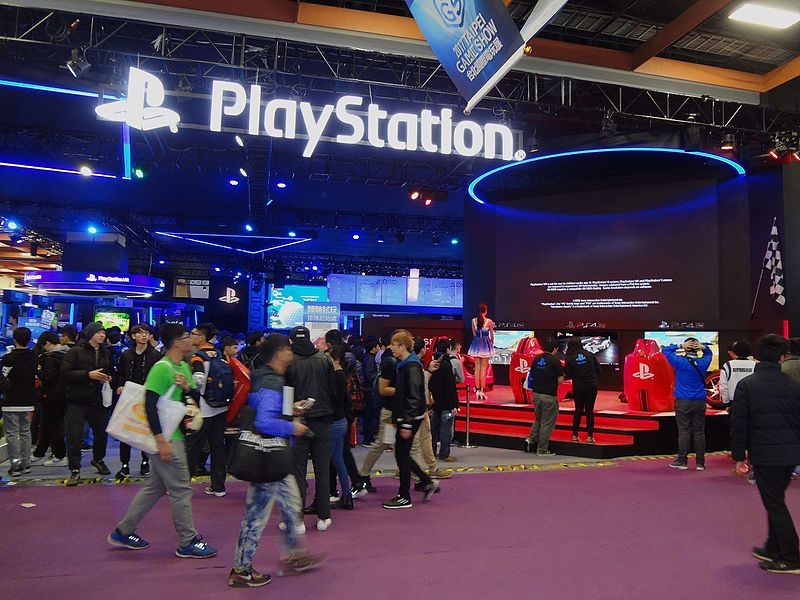Sony is uncovering more details about PlayStation 5, but it remains mum on the topic of backward compatibility. Luckily, another information just surfaced that hints at the said feature being available on the next-generation console.
A patent filed by Sony Interactive Entertainment in March 2016, published in October 2017, has explained how the company intends to make backward compatibility happen. Given the timing of its filing, it is apparently intended to be used for an upcoming tech such as the anticipated PlayStation 5.
As the feature's name suggests, backward compatibility will allow newer consoles to run video games that were programmed or developed for older gaming platforms. People have seen this on Xbox One where hundreds of titles made for Xbox 360 eventually became playable on the modern rig with all the gaming data and gamer's progress being carried over as well. Unsurprisingly, Sony plans to offer something better in the rumored PlayStation 5 backward compatibility.
One of the best ways to gain an advantage in this area is by making the process of synchronization as smoothly as possible. That way, many older games could immediately become playable on PlayStation 5. And that appears to be the above-mentioned patent is for. In simpler terms, Sony is aiming to allow developers to make their games backward compatibility-ready without altering much of its codes.
“The performance of an application on a new device may be closely matched to the performance of that same application on the legacy device by tuning the operating parameters of the new device,” Sony explained in the filing purportedly related to PlayStation 5. “Examples of operating parameters include, among other things, the clock frequencies of the new device, the number of available general purpose registers (GPRs), instruction launch rates, and the like. The application may be run repeatedly on the new system while tuning its operating parameters to adjust the application-specific performance characteristics.”
Meanwhile, Sony has officially recognized the development of PlayStation 5 last month. Unfortunately, it was also confirmed that the next-generation console will not be available this year. However, the release of some technical details at this point increases the possibility that a new gaming platform will be launched in 2020.



 South Korea Pledges 5-Year Boost in Console Gaming Market Share
South Korea Pledges 5-Year Boost in Console Gaming Market Share  US Urges China, Russia to Reject AI Control in Nuclear Arms, Align with Global Norms
US Urges China, Russia to Reject AI Control in Nuclear Arms, Align with Global Norms  Tron's Justin Sun Boosts Dogecoin, Shiba Inu at Token 2049 Conference
Tron's Justin Sun Boosts Dogecoin, Shiba Inu at Token 2049 Conference  Samsung Capitalizes on AI Boom with Advanced Memory Chips and Home Automation with Jet Bot Success
Samsung Capitalizes on AI Boom with Advanced Memory Chips and Home Automation with Jet Bot Success  Hong Kong Bitcoin, Ether ETFs Surge with $200M Investment on Debut
Hong Kong Bitcoin, Ether ETFs Surge with $200M Investment on Debut  Bitcoin Traders Unfazed by 20% Drop: 'Pretty Ordinary Stuff'
Bitcoin Traders Unfazed by 20% Drop: 'Pretty Ordinary Stuff'  US Court Sets May Hearing for Terraform Labs, Do Kwon Remedies
US Court Sets May Hearing for Terraform Labs, Do Kwon Remedies  Why it takes so long to simulate the climate in a supercomputer
Why it takes so long to simulate the climate in a supercomputer  Transaction Fees on Shiba Inu’s Shibarium Skyrocket by 500%
Transaction Fees on Shiba Inu’s Shibarium Skyrocket by 500%  2025 Sees SK hynix's HBM Chips Fully Booked Amidst AI Surge
2025 Sees SK hynix's HBM Chips Fully Booked Amidst AI Surge  Anthropic Launches Claude AI App on iPhone to Rival OpenAI’s ChatGPT
Anthropic Launches Claude AI App on iPhone to Rival OpenAI’s ChatGPT  Zeus Network Set to Launch Solana to Bitcoin Bridge in Q3 2024
Zeus Network Set to Launch Solana to Bitcoin Bridge in Q3 2024  Tesla Expands Semi Trials to Sysco After PepsiCo Success
Tesla Expands Semi Trials to Sysco After PepsiCo Success  Dongfeng Unveils High-Power Tesla Cybertruck Rival, Eyes Production in Italy
Dongfeng Unveils High-Power Tesla Cybertruck Rival, Eyes Production in Italy  Microsoft to Set Up Its First Azure Data Center in Thailand With Investment in AI
Microsoft to Set Up Its First Azure Data Center in Thailand With Investment in AI  Bitcoin Price May Consolidate for Two Months Post-Halving, Says Bitfinex
Bitcoin Price May Consolidate for Two Months Post-Halving, Says Bitfinex  BYD Profits Drop 47%, Tesla Launches Cybertruck Off-Road Guide Amid EV Price War
BYD Profits Drop 47%, Tesla Launches Cybertruck Off-Road Guide Amid EV Price War 































